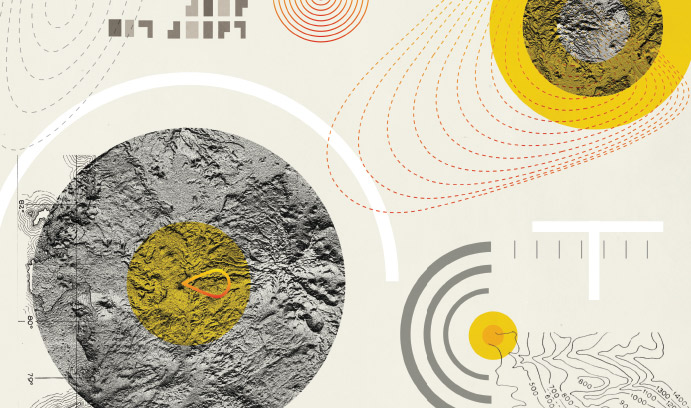Promoting Geospatial Learning

Armed with GPS-enabled iPads and infrared surface temperature thermometers, students in an urban high school in Pennsylvania fan out on their school property to take temperature readings of grass, asphalt, concrete, soil and other surfaces.
Working in pairs and groups of three, they take readings in the middle of the school’s parking lot and in shaded areas of the school property as part of an investigation into urban heat islands—built-up areas that are significantly warmer than their rural surroundings.
Later, the students head back to their classrooms where the data from their iPads are synced into class-wide datasets. They look for patterns in the temperatures they recorded on the different surfaces, such as dark asphalt vs. light asphalt and concrete vs. grass, and under differing conditions, such as morning vs. afternoon and shaded vs. unshaded areas.
The students’ investigation—one of several socio-environmental studies designed to enhance their learning—is part of an innovative geospatial curriculum developed by Lehigh researchers, earth and environmental scientists, and social scientists to help build the students’ geospatial and STEM-related skills and to help the teachers better implement spatial thinking in their classroom environments.
Led by Alec Bodzin, professor of instructional technology and teacher education at Lehigh, the three-year ITEST Strategies Project is being funded by a $1.2 million grant from the National Science Foundation. The Lehigh team collaborates with several teachers at the Building 21 high school in the Allentown (Pa.) School District, to design, implement and test several investigations that students conduct as part of their science and social studies curriculum.
“The students have been really engaged,’” says Bodzin. And in school districts such as Allentown, where attrition rates are a concern, “school has to be meaningful and relevant to them….They have to see that, ‘yes, I can do these types of things.’”
Co-investigators are Thomas C. Hammond, associate professor of instructional technology and teacher education and associate dean of Lehigh’s College of Education; Breena Holland, associate professor of political science; David Anastasio, chair of the Earth and Environmental Sciences Department, and STEM educator Kate Popejoy. Senior personnel include Dork Sahagian, professor of earth and environmental sciences; Joan Fu, professor of practice in education and human services, and Scott Rutzmoser, senior geospatial specialist in Lehigh’s Center for Innovation in Teaching and Learning.
Learning goals are driving the design process, Bodzin says. Through the hands-on activities, the students learn to think spatially and make proposals to improve the community.
To better understand the heat island phenomenon, the students analyze a GIS map of Allentown’s land cover. The map shows roads and parking lots, as well as natural features, such as tree canopies. The students examine a nearby neighborhood and suggest changes to mitigate the urban heat island effect, such as adding rows of trees within parking lots or redesigning the front of their school to help lower the temperature that the building gives off.
In an exploration of trees and ecological services, the students are tasked with identifying the trees in the areas around their school and examining the environmental and societal benefits that trees provide to the city. They also investigate whether the placement of trees and vegetation has any correlation to levels of crime in Allentown.
In another investigation into urban zoning, the students identify land-use zones in the city, determine how different zones are distributed around their school and compare their observations with the city’s official zoning map. How has land use in the city changed over time, how is land being used now, and how can they city plan for future land use that is environmentally, social and economically sustainable?
The projects are designed to prepare students for both college and careers.
“Geospatial literacy is important in developing skills,” says Bodzin. “If you go into city planning, if you do environmental planning, if you work in civil engineering—there are just a lot of industries that use GIS (geographic information systems) now.”
Mentors are a critical component of the project. Partners include Allentown's city planning bureau and parks department, and PPL Electric Utilities, which employs a forester to supervise and analyze tree-related maintenance of the electrical grid.
In all, the Lehigh team has conceptualized 10 student investigations and projects, including exploring the impact of transportation methods on climate change, identifying the best places to plant new tree species on the school grounds and examining how to develop areas of Allentown to be more environmentally, socially and economically sustainable. Not all the projects have yet been fully developed.
Bodzin hopes the project will have ripple effects, in addition to bringing an inquiry-driven geospatial classroom curriculum to life. As the students get older, he says, perhaps they’ll choose to get involved in city government and make sure their voices are heard on issues.
“We’re hoping to develop thoughtful citizens,” he says, “and to help them to make informed decisions.”
Illustration by Chad Hagen
Posted on:




